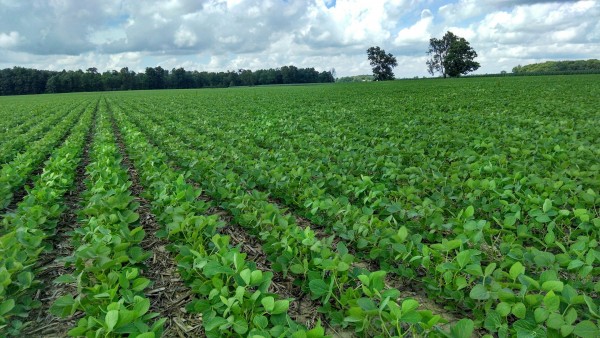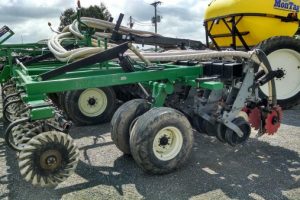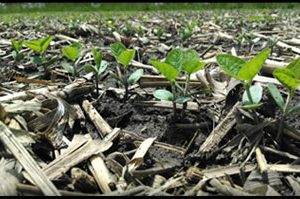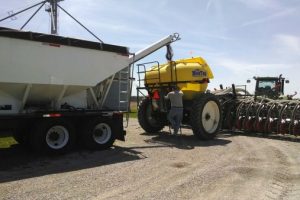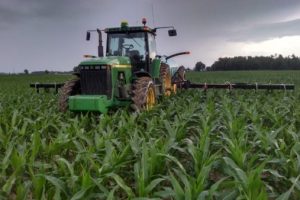Our Focus
Zucker Grain Farm, OH
Our belief has always been that protecting the environment would enhance growing quality crops. Over time, new technology and reforms in existing environmentally friendly farming methods have reinforced and proven our belief to be correct.
-
No-till
“No-till” improves soil health and natural soil drainage by leaving plant residue on the soil surface all year long, every year. The residue is food for soil microbes and earth worms which by their activity loosen the soil and provide holes to improve water and root movement through the soil and improve soil structure.
-
Strip-till
Higher crop yields have left more residue on the surface causing the soil to stay cooler and damper in the spring on our farms with heavy clay soils , leading to problems with stand establishment and poor early plant growth. We are adopting a new technique called strip-till to solve these problems. It is still considered no-till because it leaves most of the soil surface covered with residue, except for a narrow strip. We plant corn on this narrowly tilled strip.
-
Waterway Grass Buffers
We leave a 25 foot grass strip along both sides of waterways. This grass strip helps to protect the environment by capturing much of the fine soil particles that are carried with the water that runs off of the field during heavy rain fall events. These fine soil particles carry some nutrients and pollutants on them. The grass buffers slow the water to capture soil and pollutants resulting in improvement of water quality in streams and lakes down steam.
-
Apply Phosphate Fertilizers Subsurface
While the grass buffers capture most of the nutrient laden soil particles, in excessively heavy rainfall events, some can make it into waterways along with some nutrients dissolved in the water. So to reduce the amount of phosphates in runoff water, we apply all phosphate fertilizers below the soil surface where it cannot be dissolved in the surface runoff water or attached to any soil particles that may make it into the runoff water.
-
Grid Soil Sampling and Grid Fertilizer Application
We apply all lime and potash fertilizer based on a grid soil sample test. For decades fertilizer and lime have been applied in a blanket manner. All areas of the field received the same rate. With grid soil sampling/application, the fields are sampled and treated in 2.5 acre blocks. Block size is adjusted to fit the soil types in the field to obtain even more accuracy. The result is that fertilizer and lime are applied where they are needed most and not in excessively high nutrient areas of the field. This also helps the environment by eliminating areas of excessive nutrients that will dissolve and be carried with rain water into waterways.
-
Subsurface / GPS Application of Fertilizer
We have purchased an Air-Fertilizer applicator that is capable of variable rate nutrient/fertilizer application, controlled by grid soil tests maps stored in the onboard tractor computer. The Fertilizer Metering System uses air pressure to blow the appropriate amount of fertilizer nutrients below the soil surface behind the shanks of our strip-till machine.
-
Sprayer with Auto – Steering Control
We can now reduce the amount of pesticides applied from pass to pass with GPS controlled steering on the applicator. For several years we have used a GPS light bar that we manually followed to help reduce pesticide application. We now have GPS guided steering control (the sprayer will steer itself ). This is much more accurate than a human can steer, reducing application error when the sprayer boom overlaps the previous pass. Limiting the amount of boom overlap will reduce the amount of pesticides used.
-
A couple more things that enhance soil quality:
We use large flotation type tires on heavy equipment that reduce soil compaction. Less soil compaction allows more rapid infiltration of rain water and fosters robust plant root growth which in turn promotes soil biological activity.
We plant corn spaced in narrow 20″ rows which allows the plants to be more evenly spaced over the soil profile and this helps to hold the soil in place during heavy rainfall events.
